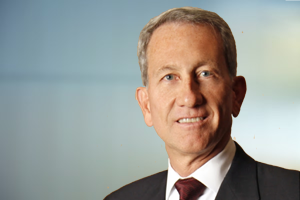As part of our ongoing commitment to move the industry forward against fraud, RGA is a proud member of the Coalition Against Insurance Fraud, America’s only anti-fraud alliance speaking for consumers, insurance companies, government agencies, and others.
We invited Matthew Smith, Director of Government Affairs & General Counsel at the Coalition to present at our 2018 RGA Fraud Conference, the premier cross-discipline fraud event for the insurance industry. Below is a brief interview with Matthew regarding his presentation, “How Demographics and Attitudes Impact Insurance Fraud,” and related topics.
In general, how would you characterize the current state of insurance fraud?
Unfortunately, despite the industry having greater awareness of fraud and taking additional steps to combat it, fraud is more rampant and more evolving than ever. At the Coalition, we estimate that insurance fraud costs American consumers more than $80 billion annually. And that is a conservative estimate – the FBI puts the number closer to $136 billion citing $40 billion in P&C fraud, and including medical fraud estimates from CMS and the GAO of approximately $96 billion annually.
What are some of the biggest misconceptions people have about insurance fraud?
First, that fraud is not as big a problem as it really is. To add some perspective to the $80 billion in annual costs I mentioned earlier, think about this: As currently budgeted, $80 billion is more than the federal government will spend on cancer research over the next 16 years. So just imagine all the good we could be doing with that money.
The second big misconception is that we can readily identify people who are more likely to commit insurance fraud based on age or other demographics. Many people assume, for example, that older people are more honest and ethical and therefore much less inclined to engage in fraudulent activity. In fact, a variety of motivating factors and attitudes drive older generations to defraud insurers:
- Greater financial need in retirement due to longer life expectancy
- Uncertainty around Social Security and insufficient savings (approximately 25% of baby boomers have no savings for retirement)
- Feeling of economic entitlement from a lifetime of work and years of paying premiums
- Health concerns coupled with increased medical costs
- An unwillingness to make lifestyle changes and growing credit card debt
Regardless of their reasons, with 10,000 Americans turning 65 every day for the next 30 years, any insurance fraud trends among the aging population should be taken seriously.
So any type of person is capable of committing fraud?
No question. For another example, just look at the other end of the spectrum from baby boomers: millennials, a generation that will make up 46% of the workforce by 2020. In many ways, millennials are a very high-minded, ethically driven generation. Yet an Accenture survey from 2011 found that respondents age 18-24 were more accepting than any other age group of overestimating the value of an insurance claim or submitting claims for items not lost or stolen or for fake injuries.
Keep in mind that this study is seven years old and that those respondents are now 25-31 – the prime target growth market for insurers. Also keep in mind that psychology teaches us that a person’s morals and values don’t change much over time.
It should be clear at this point that vigilance in identifying and avoiding insurance fraud by all people from all demographics is essential.
Last year, the coalition published its third edition of the Four Faces of Insurance Fraud, a national study of consumer attitudes about this persistent crime. What were some of the most noteworthy findings?
We’ve conducted this study every 10 years since 1997 to assess general attitudes on this topic. Last year, we interviewed 2,733 people using a representative sample by state, age, income, race, and gender.
People generally hold one of four broad attitudes toward insurance schemes (hence the title, Four Faces):
- Moralist – “Insurance fraud is wrong. Period.”
- Realist – “Insurance fraud will always be here and there is nothing we can do about it.”
- Conformist – “Everyone else is doing it, so why can’t I.”
- Critic – “I have no problem with people sticking it to insurance companies.”
Our most significant – and welcome – finding was that the critic group fell from 26% to 11% over the last 10 years. So I think our message is getting out there that insurance fraud ultimately costs all of us – in the form of increased premiums, fewer benefits, etc. But we also found that the percentage of respondents in the moralist group dropped over the past decade as well. There seems to be a movement toward the middle of the spectrum. As an industry, we need to work together to push the needle in the right direction.
How are advances in technology and changes in the way insurance is being delivered impacting fraud?
New data sources, predictive analytics, and technology such as artificial intelligence are speeding up the insurance process by automating functions previously performed manually. Using proprietary algorithms, some companies are now issuing policies and paying claims in seconds – all online. Scores of startups are entering this space every year, and incumbents are racing each other to bring digital and app-based solutions to market.
But we need to be careful as an industry and ask questions before we plunge headlong into this new future:
- Do we know that our algorithms are reliable?
- What data is being used? Are we sure it is non-discriminatory to all groups of people?
- Are we working with regulators as we pursue innovation?
- How do we transition to digital safely when many states still require paper documentation? Example: needing signed copies in order to rescind a life insurance policy.
Questions like these cannot be ignored. With fraudsters looking to exploit any opening, we must pursue progress with our defenses up.
What is the most important thing insurers can do to combat fraud?
Work together. We need to share knowledge of best practices and lessons learned if we are to keep pace with those looking to defraud us. We need to participate in organizations like the Coalition (now with 170+ member companies) and events like the RGA Fraud Conference. Joining forces, we can better dialogue with consumers and policyholders about insurance fraud and what it costs them. When people realize they are the ultimate victims of this crime, attitudes will change and help inspire better behavior moving forward.



